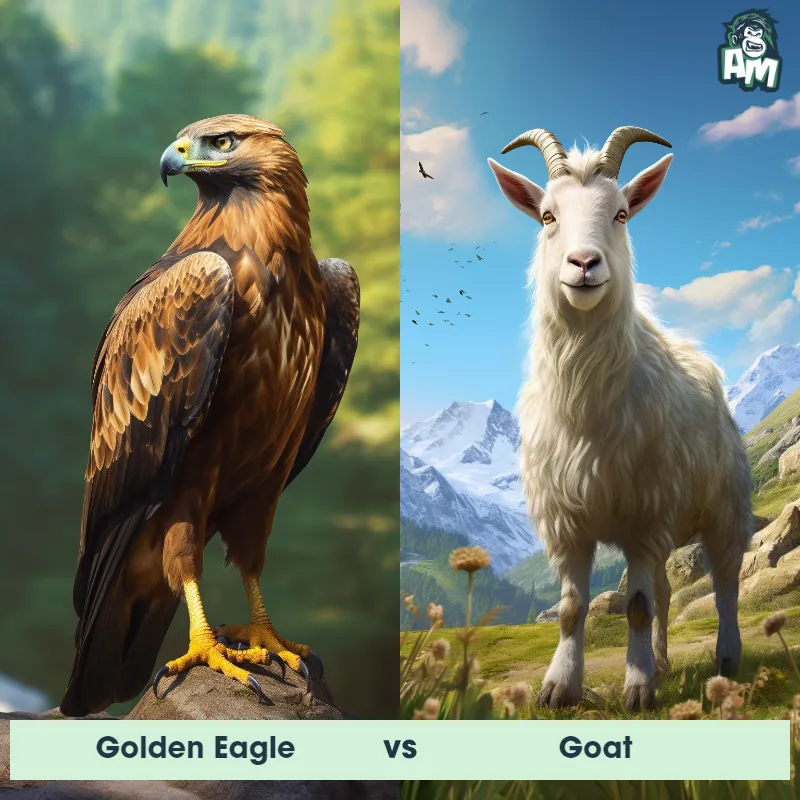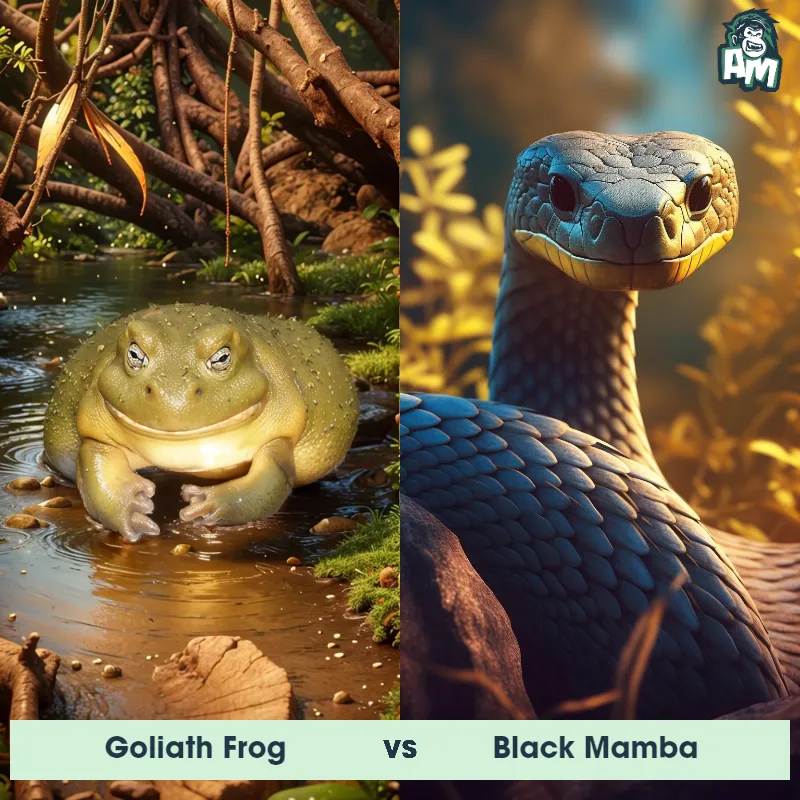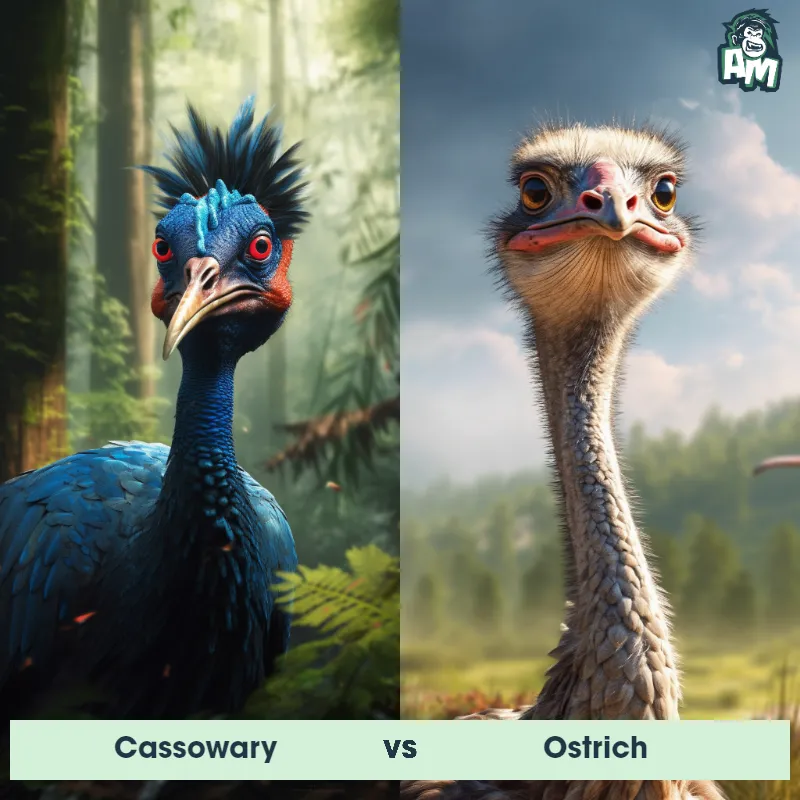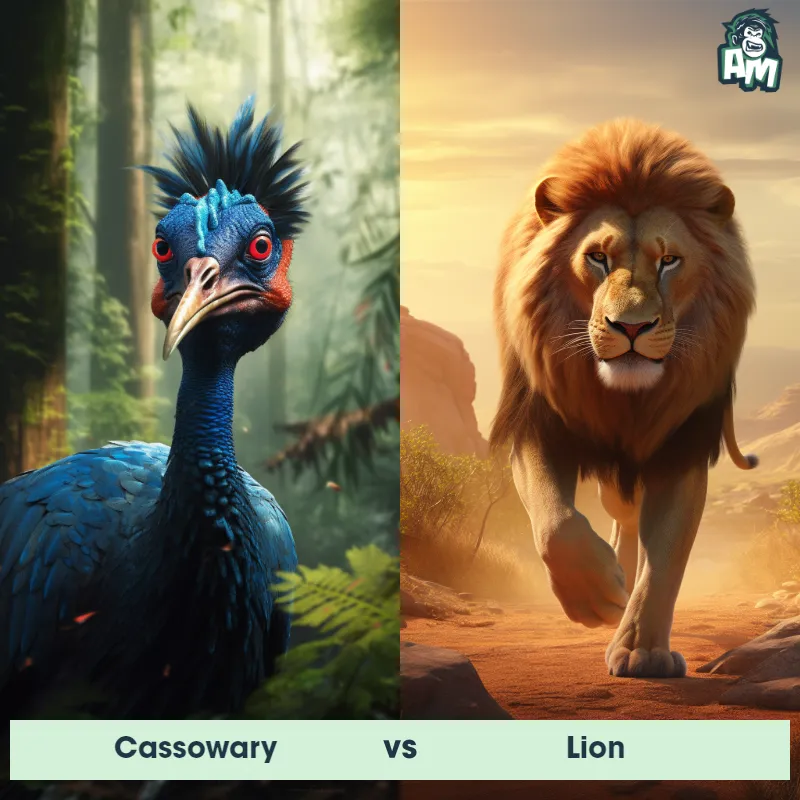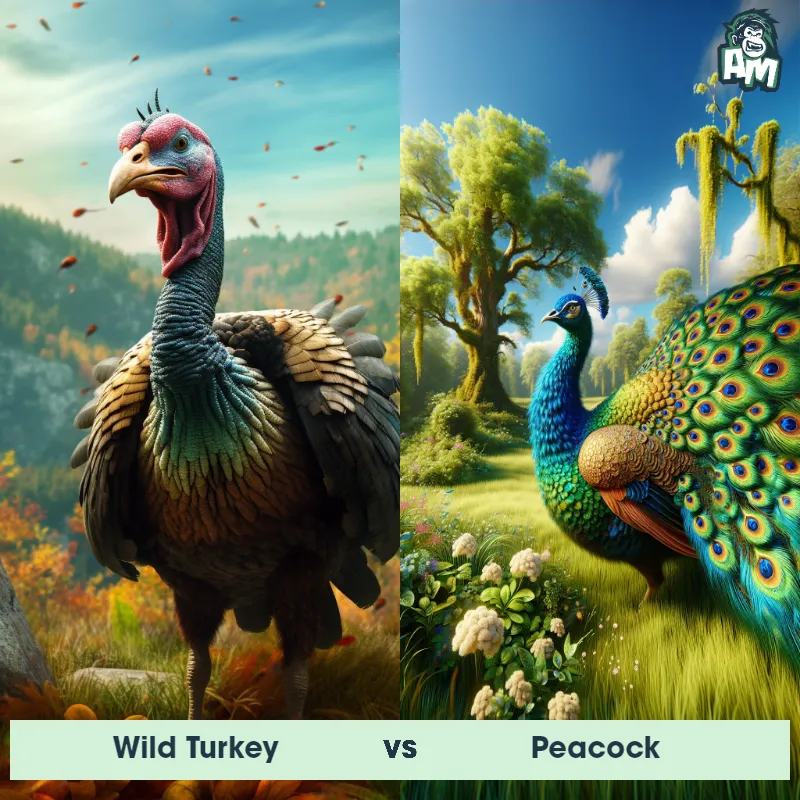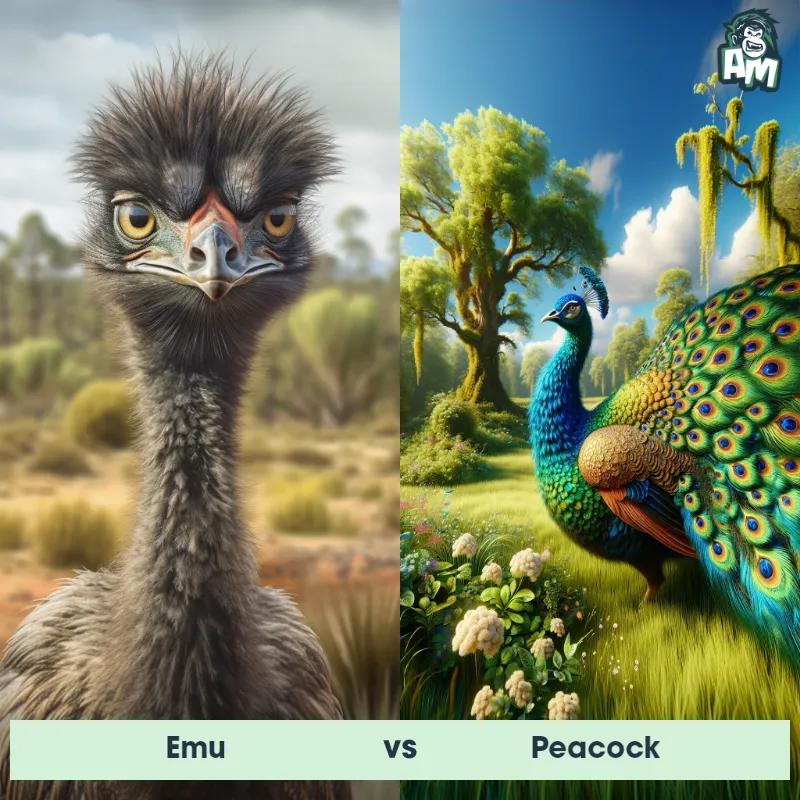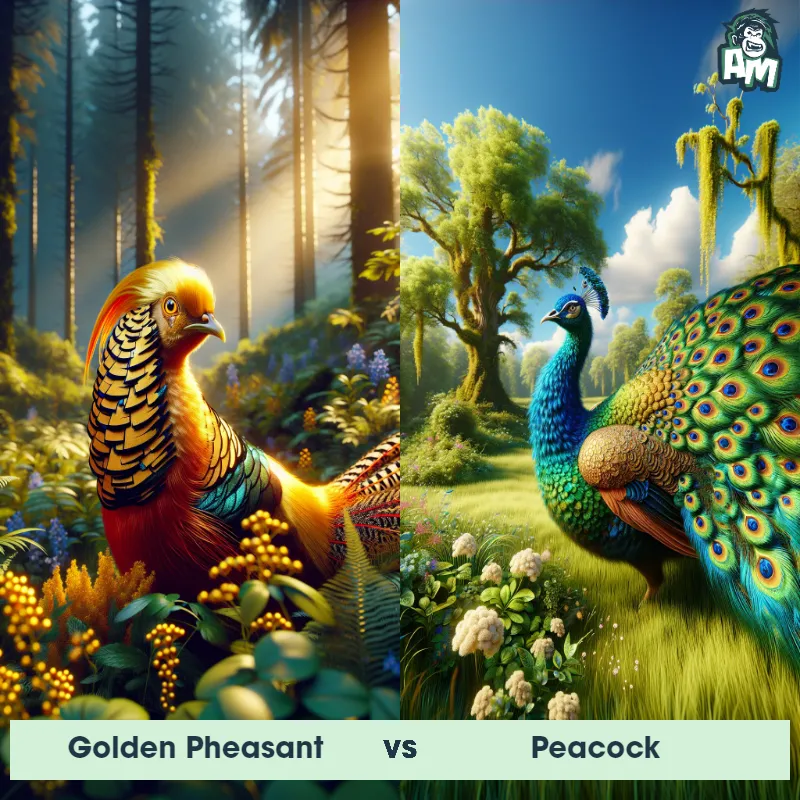Cassowary vs PeacockSee Who Wins

Ladies and gentlemen, welcome to this thrilling match-up between two magnificent creatures, the Cassowary and the Peacock! Get ready for a showdown of strength, agility, and fierce determination. These creatures have come to prove their dominance tonight, so let's get this contest started!
Contender 1: Cassowary
The Cassowary is a large, flightless bird native to the tropical forests of Australia and New Guinea. They are known for their striking appearance, with a tall, colorful casque on their head, bright blue neck and head, and black feathers covering their body. Cassowaries are also known for their powerful legs and sharp claws, which they use for defense and to navigate through dense vegetation. They are omnivores, feeding on a variety of fruits, insects, and small animals.
Fun Fact: Cassowaries are considered one of the most dangerous birds in the world, with a reputation for being aggressive and territorial. They have been known to attack humans and other animals with their sharp claws and powerful legs, which can deliver a deadly kick.
Contender 2: Peacock
Peacocks are large and majestic birds known for their colorful plumage and extravagant courtship displays. The male, called a peacock, is characterized by its long, iridescent tail feathers, which feature a mix of vibrant blues, greens, and browns with striking eye-shaped markings. Their bodies are covered in beautiful metallic plumage ranging from dark blues to rich greens. Peahens, the females, have a more subdued appearance with a brownish coloration and lack the dramatic long tail feathers. Peacocks are native to South Asia and are often found in forested areas, where their stunning beauty and distinct call make them a sight to behold.
Fun Fact: Did you know that the beautiful long tail feathers of a peacock, also known as its train, can reach up to six feet in length? These impressive feathers are used primarily during courtship displays, where the male raises and spreads them into an impressive fan to attract potential mates.
Matchup Stats
| Cassowary | Peacock | |
|---|---|---|
| Size | Up to 5.6 feet (1.7 meters) tall | 3-4 feet (0.9-1.2 meters) |
| Weight | Up to 167 pounds (76 kilograms) | 8-13 pounds (3.6-5.9 kilograms) |
| Speed | Speed: 31 mph (50 km/hr) | 10mph (16km/h) |
| Key Strength | Powerful legs and sharp claws | Strong beak and talons for defense |
| Biggest Weakness | None | Heavy and cumbersome tail feathers limit agility |
Current Votes
Cassowary vs Peacock
See Who Wins
View More Matches
Looking For More?
Similar Matches
Scientific Stats
| Cassowary | Peacock | |
|---|---|---|
| Scientific Name | Casuarius casuarius | Pavo cristatus |
| Family | Casuariidae | Phasianidae |
| Habitat | Tropical forests | Forested areas, open grasslands, and cultivated areas. |
| Geography | Australia and New Guinea | South Asia, specifically India and Sri Lanka |
| Diet | Omnivorous | Omnivorous: seeds, fruits, insects, reptiles, and small mammals. |
| Lifespan | 10 years - 20 years | 15 years - 20 years |
Key Differences between Cassowary and Peacock
- Plumage Pattern: The Peacock possesses a distinctive plumage pattern characterized by long, elaborate and iridescent tail feathers, known as a "train," which are used for courtship displays, whereas the Cassowary lacks such elaborate tail feathers and instead has coarse, hair-like feathers covering its body.
- Color: While both species display beautiful and vibrant colors, the Peacock's plumage primarily consists of iridescent shades of blue, green, and bronze, while the Cassowary's feathers are predominantly black, with some species exhibiting bright blue or reddish wattles on their neck and head.
- Leg Structure: The Cassowary possesses long, powerful legs armed with sharp talons, enabling it to deliver remarkably powerful kicks, whereas the Peacock's legs are relatively shorter and lack these specialized adaptations, as they have evolved primarily for perching and display purposes.
- Habitat Preferences: While both species are native to different parts of the world, the Cassowary is found primarily in the rainforests of Australia, New Guinea, and nearby islands, whereas the Peacock's natural habitat includes open forests and grasslands in South Asia and surrounding regions.
- Size: The Cassowary, standing at an average height of around 5 to 6 feet and weighing up to 130 pounds, is significantly larger and bulkier than the Peacock, which reaches an average height of 3 to 4 feet and weighs approximately 11 pounds.
- Head Features: The Cassowary stands out with its large and bony casque atop its head, which is absent in the Peacock. The casque of the Cassowary is a unique and prominent feature, varying in shape and size depending on the species.








